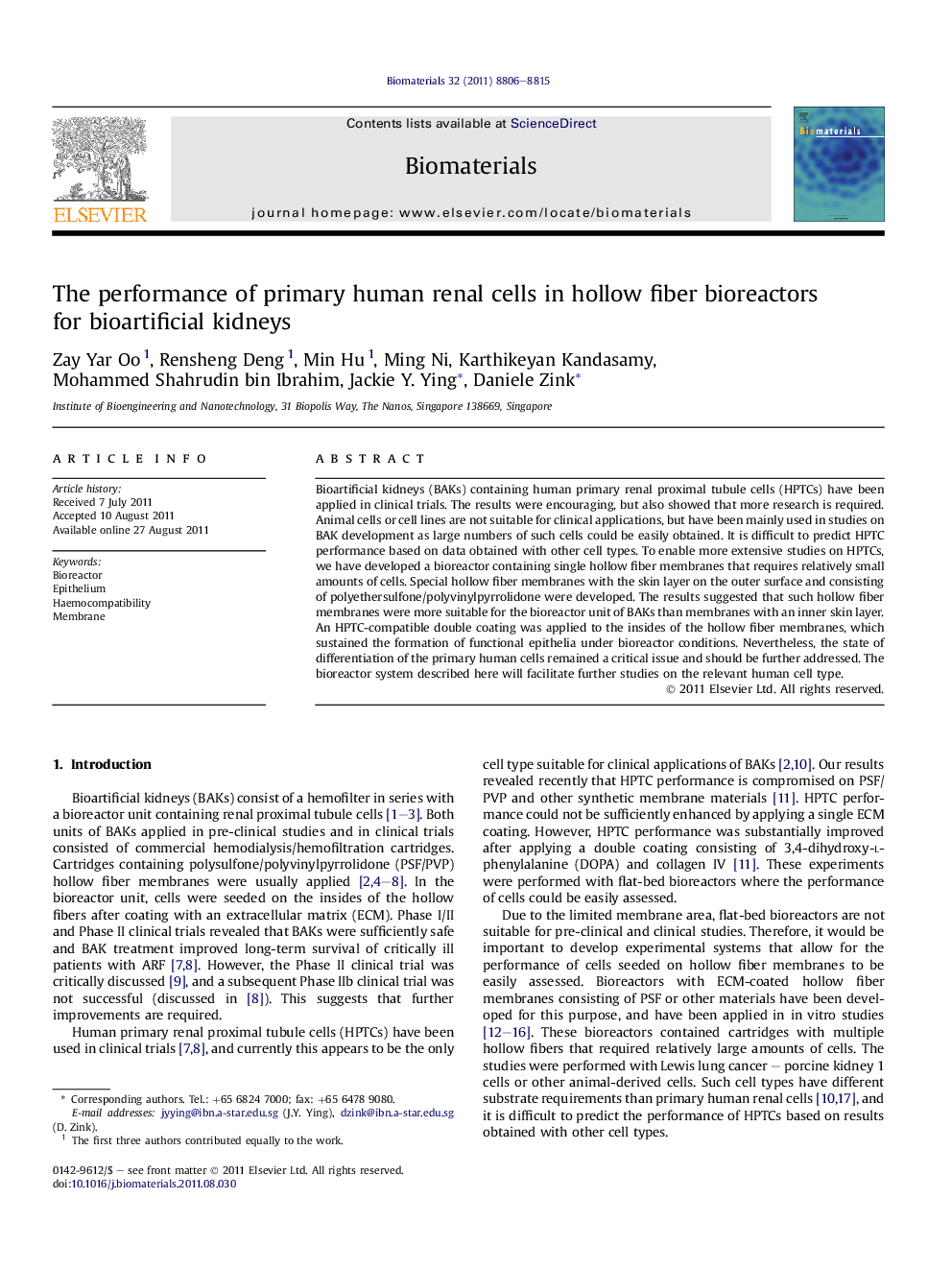| Article ID | Journal | Published Year | Pages | File Type |
|---|---|---|---|---|
| 7103 | Biomaterials | 2011 | 10 Pages |
Bioartificial kidneys (BAKs) containing human primary renal proximal tubule cells (HPTCs) have been applied in clinical trials. The results were encouraging, but also showed that more research is required. Animal cells or cell lines are not suitable for clinical applications, but have been mainly used in studies on BAK development as large numbers of such cells could be easily obtained. It is difficult to predict HPTC performance based on data obtained with other cell types. To enable more extensive studies on HPTCs, we have developed a bioreactor containing single hollow fiber membranes that requires relatively small amounts of cells. Special hollow fiber membranes with the skin layer on the outer surface and consisting of polyethersulfone/polyvinylpyrrolidone were developed. The results suggested that such hollow fiber membranes were more suitable for the bioreactor unit of BAKs than membranes with an inner skin layer. An HPTC-compatible double coating was applied to the insides of the hollow fiber membranes, which sustained the formation of functional epithelia under bioreactor conditions. Nevertheless, the state of differentiation of the primary human cells remained a critical issue and should be further addressed. The bioreactor system described here will facilitate further studies on the relevant human cell type.
